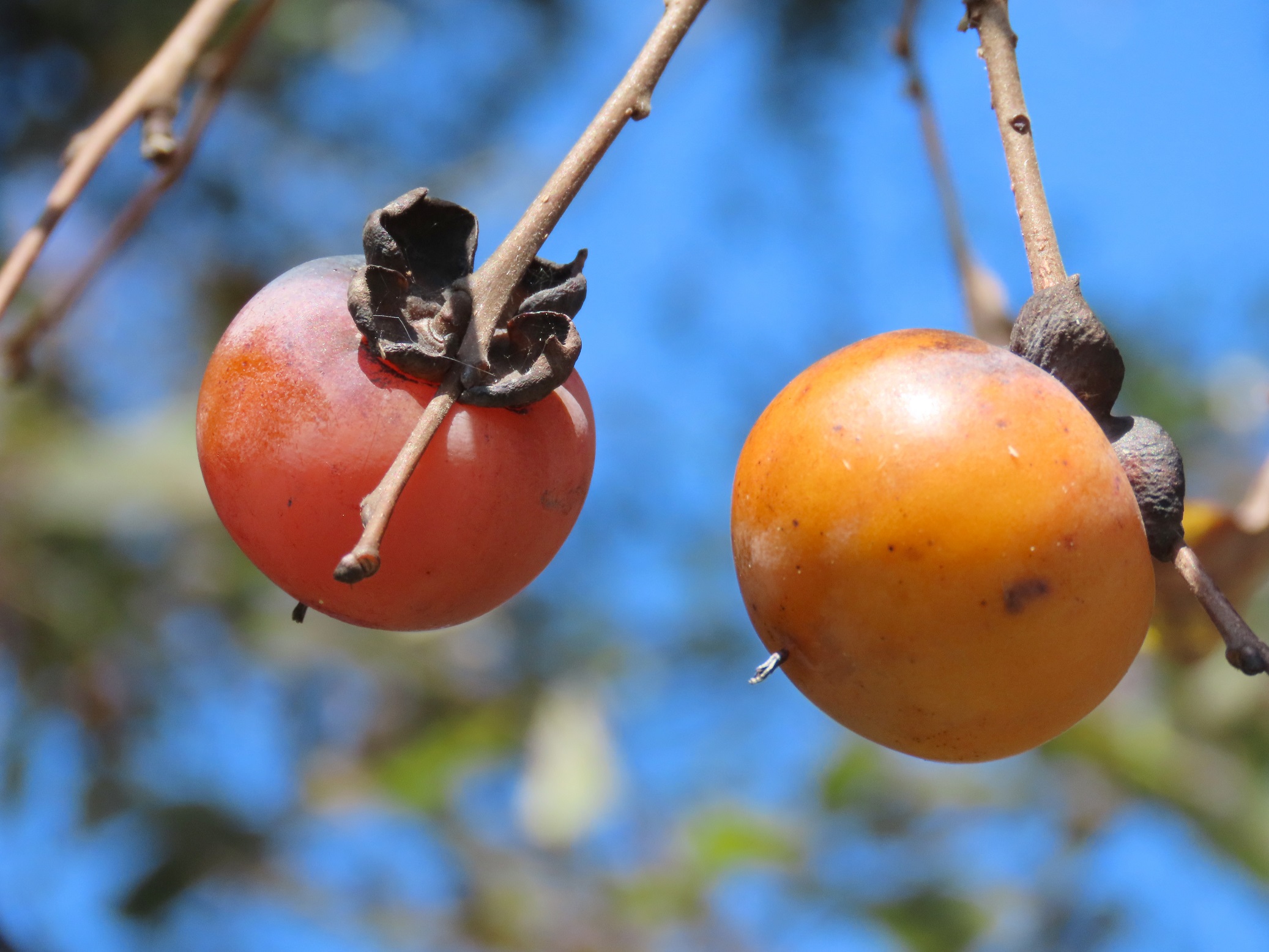
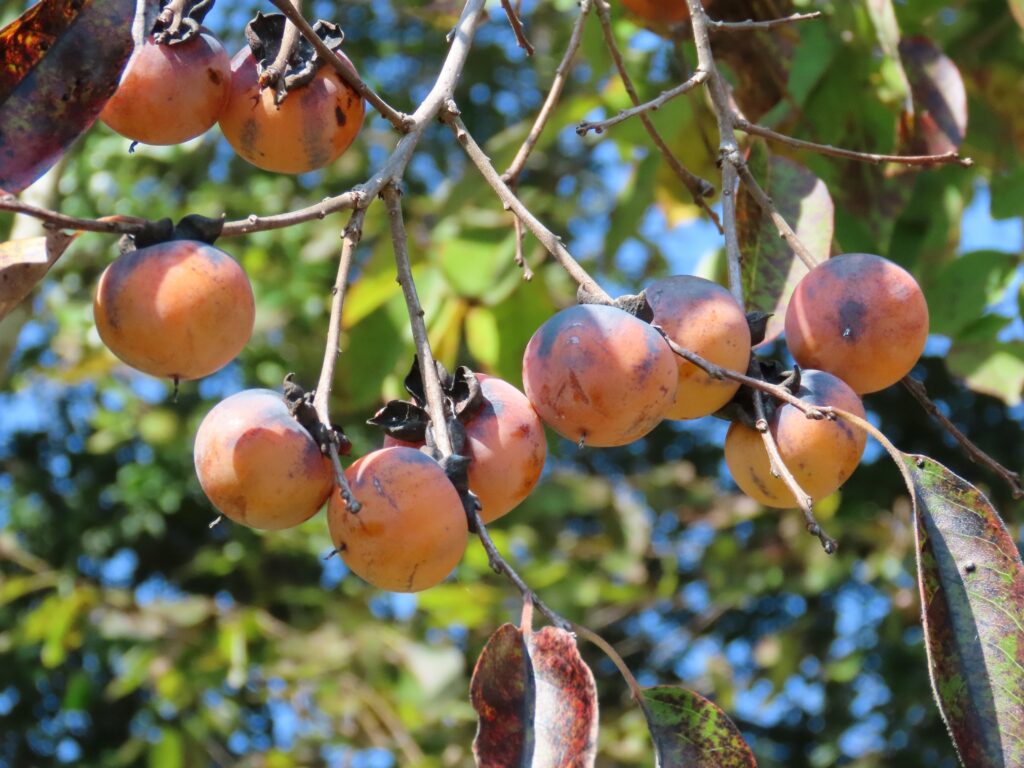
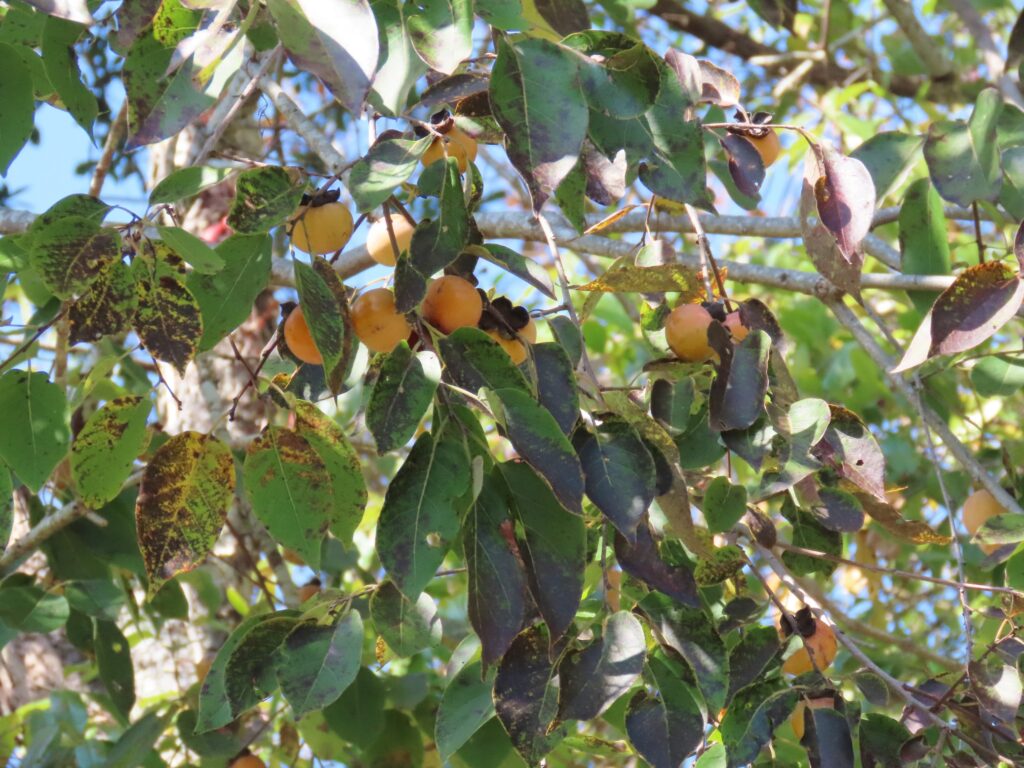
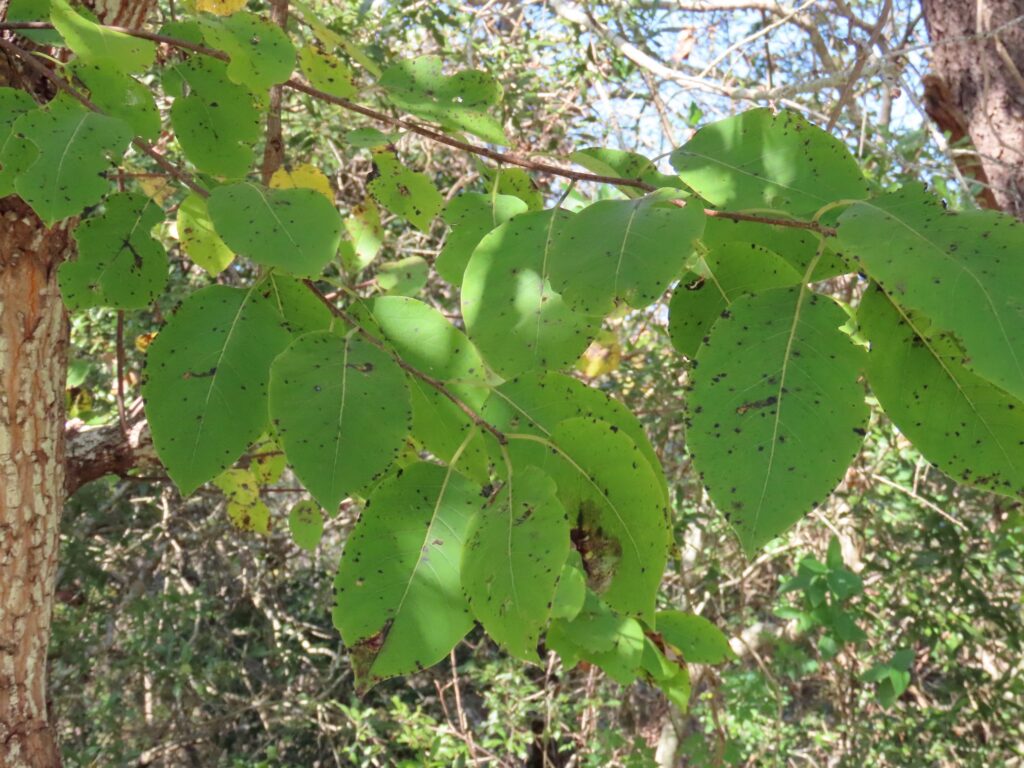
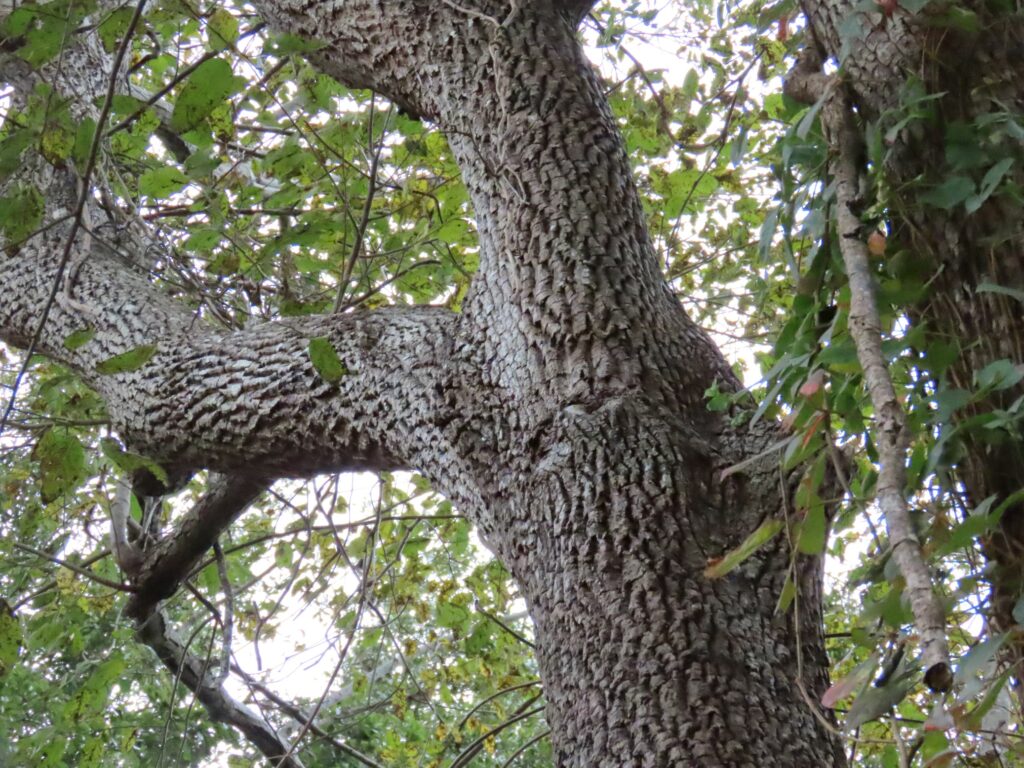
This week for Flora and Fauna Friday we have a sweet treat from the fall forest, American Persimmon (Diospyros virginiana).
American Persimmon is found throughout the southeastern United States. It’s usually a small to medium-sized tree which grows on a wide array of soil types. On Edisto Island, it’s commonly found on field rows, road sides, ditch edges, and coming up in fallow fields. In drier habitats and those with poor soils, it typically grows into a short and sometimes shrubby tree. On fertile soils with ample water, it can grow into a large canopy tree. American Persimmon is a tree that’s easy to identify. Its fairly large, simple, alternate, oval-shaped leaves resemble few other species here in the coastal plain. Persimmons also commonly get a leaf-spot disease here on the coast, which manifests as small black dots all over the tree’s leaves, and this symptom is so ubiquitous that it makes American Persimmon very easy to pick out at a glance. On a quick aside, Persimmon is also one of the host plants for the Luna Moth, whose caterpillar feeds on its leaves. In the winter Persimmon is still an easy one to pick out as it has unique bark, which is dark, almost black, gray-brown and deeply furrowed with a blocky appearance, and distinctive twigs, which are a warm brown, punctuated with little corky bumps, and bear small, black buds.
However, American Persimmon is easiest to identify in fall by its fruits. The fruit of our native Persimmon is a large berry, at about an inch across, and colored a rich blend of soft orange and red, darkening and reddening as it ripens, with a velvety sheen of silver on the skin. Inside this fruit are a handful of persimmon seeds, which are large, flat, and orange-brown in color. American Persimmons are incredibly productive fruit trees. In good years, a small wild Persimmon can be so laden with fruit as to break branches. Persimmon fruits are adored by an almost endless list of wildlife, including deer, foxes, mockingbirds, raccoons, box turtles, orioles, squirrels, cedar waxwings, coyotes, opossums, turkey, black bears, and the list goes on. American Persimmon is also very edible for people! When fully ripe, the fruit has a heavy honey-sweet flavor enrichened with a complex medley of intermingled fruity notes. A ripe persimmon is a uniform rose-red in color and mushy to the touch. However, when NOT fully ripe, the fruit is unbearably astringent due to its high tannin content, like red wine cranked up to eleven, which leaves your mouth feeling like it’s full of sawdust. That extreme astringency is harmless but practically intolerable. Finding a perfectly ripe Persimmon in the wild can be a challenge, given every critter in the woods is looking for one too. To get around this competition with wildlife, one can harvest not-quite-ripe persimmons and ripen them through a process called bletting. This was historically done by exposing the fruits to light frost for a few days. Nowadays and down here where we can’t rely on frost, this is most easily accomplished by placing the persimmons in a paper bag with a banana for a few days until they begin ripening and then, once close to ripe, storing them in the fridge (sans banana) for a week or so to blet them. One additional fact is that American Persimmon is a dioecious plant, meaning that there are both male and female trees. Male trees will never produce fruit and you can’t tell which kind of tree you have until they mature and flower. Female trees won’t produce fruit either unless there are male trees nearby to pollinate them. So if you’re interested in growing your own American Persimmon trees, you’ll need to plant a handful!